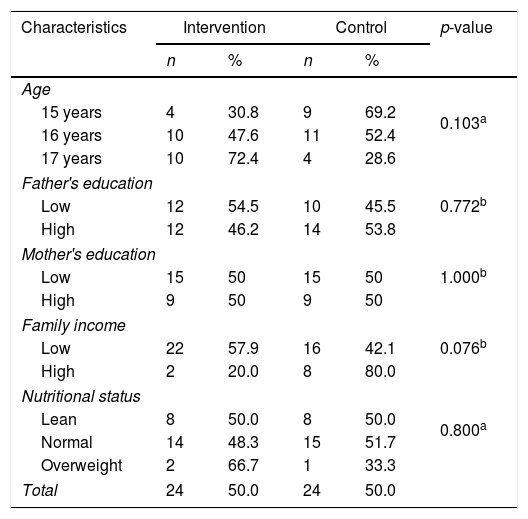This study aimed to investigate the role of physical activity in the Hb level of adolescent girls who previously supplemented with the Moringa oleifera (MO) powder in Jeneponto District.
MethodThis study was a quasi-experiment study with pre- and post-test control group design. It was conducted in four (4) senior high schools in Tamalate subdistrict, where anemia among adolescent girls is more prevalent compared to other subdistricts. Senior High School no 2, Babussalam DDI Kassi School, Vocational High School of Persada and Islamic High School of Darul I’tisham were purposively selected representing the public and private school in Jeneponto Regency. A total of 48 respondents divided into two groups, MO group (receiving MO powder with 2×2 of 500mg capsule) and control group (without treatment), were observed for three months. Hb samples were collected twice with Finger Prick method using HemoCue. Mann–Whitney and Wilcoxon test were performed to analyze the result.
ResultsThere was no difference in characteristic variables between the treatment and the control group. This study shows that the average percentage of nutrient intakes was varied across the type of nutrients. The lowest was protein intake (1.85%) while the highest was vitamin A (27.22%). Linear regression analysis shows that physical activity did not change Hb levels (p=0.11) with R2 was 0.054.
ConclusionIn summary, it was found that physical activity did not significantly affect Hb changes, as this factor only has a small contribution. Intensive monitoring and observation should be promoted to keep the students doing physical activity. Thus, they maybe protected to the risk of anemia.
Artículo
Comprando el artículo el PDF del mismo podrá ser descargado
Precio 19,34 €
Comprar ahora








